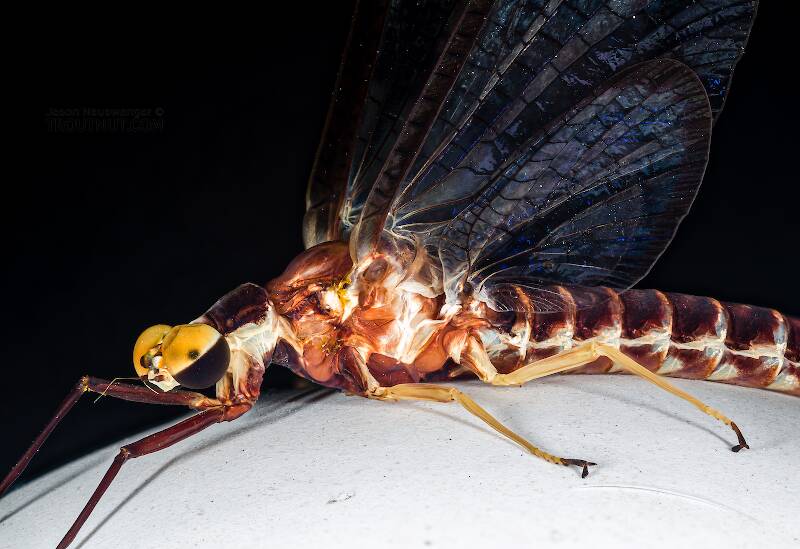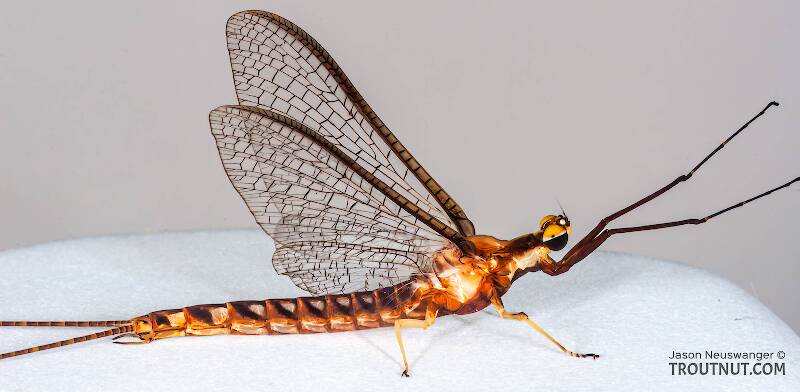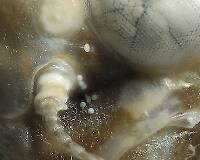
Blue-winged Olives
Baetis
Tiny Baetis mayflies are perhaps the most commonly encountered and imitated by anglers on all American trout streams due to their great abundance, widespread distribution, and trout-friendly emergence habits.
Featured on the forum

I was not fishing, but happened to be at an unrelated social event on a hill above this tiny creek (which I never even saw) when this stonefly flew by me. I assume it came from there. Some key characteristics are tricky to follow, but process of elimination ultimately led me to Sweltsa borealis. It is reassuringly similar to this specimen posted by Bob Newell years ago. It is also so strikingly similar to this nymph from the same river system that I'm comfortable identifying that nymph from this adult. I was especially pleased with the closeup photo of four mites parasitizing this one.

Troutnut is a project started in 2003 by salmonid ecologist Jason "Troutnut" Neuswanger to help anglers and
fly tyers unabashedly embrace the entomological side of the sport. Learn more about Troutnut or
support the project for an enhanced experience here.
This topic is about the Mayfly Species Hexagenia limbata
It starts like a rise of small trout. There are dimples on the surface--fingerling trout eating midges, perhaps. But these are no fish. The water breaks and out pop the yellow sails of a giant Hexagenia dun. Then another. And another. A vortex appears in a flash below the mayfly and it vanishes with a slurp so loud it echoes off the distant bank. A square tail like a shark fin breaks the surface behind the swirl as a brown trout twice the size of your net retreats back to his deeper lair. The Hex hatch is on.This Midwestern legend plays out every year on calm, dark, humid nights in early July. Anglers who only fly fish once a year drive hundreds of miles to play their part in the drama, while the mayflies themselves make the television news by showing up on doppler radar or calling snowplows out of dormancy to remove layers of Hexagenia (or "Hex") duns from the bridges. In the cold trout rivers of Wisconsin and Michigan, huge nocturnal brown trout whose usual menu consists of smaller brown trout become, for a week or so, prime dry fly quarry.
According to the literature, these are the second largest mayflies in the United States, behind the related Litobrancha recurvata flies. However, there are reports of limbata exceeding 40mm in some locales, which would make them the largest.
Example specimens
TNEAL on Apr 29, 2014April 29th, 2014, 3:59 am EDT
They come out of their burrows numerous times before emergence to shed skins during the growth to maturity period making them available to fish fairly often.
Quick Reply
Related Discussions
Topic
Replies
Last Reply
8
Dec 10, 2009
by Jmd123
by Jmd123





